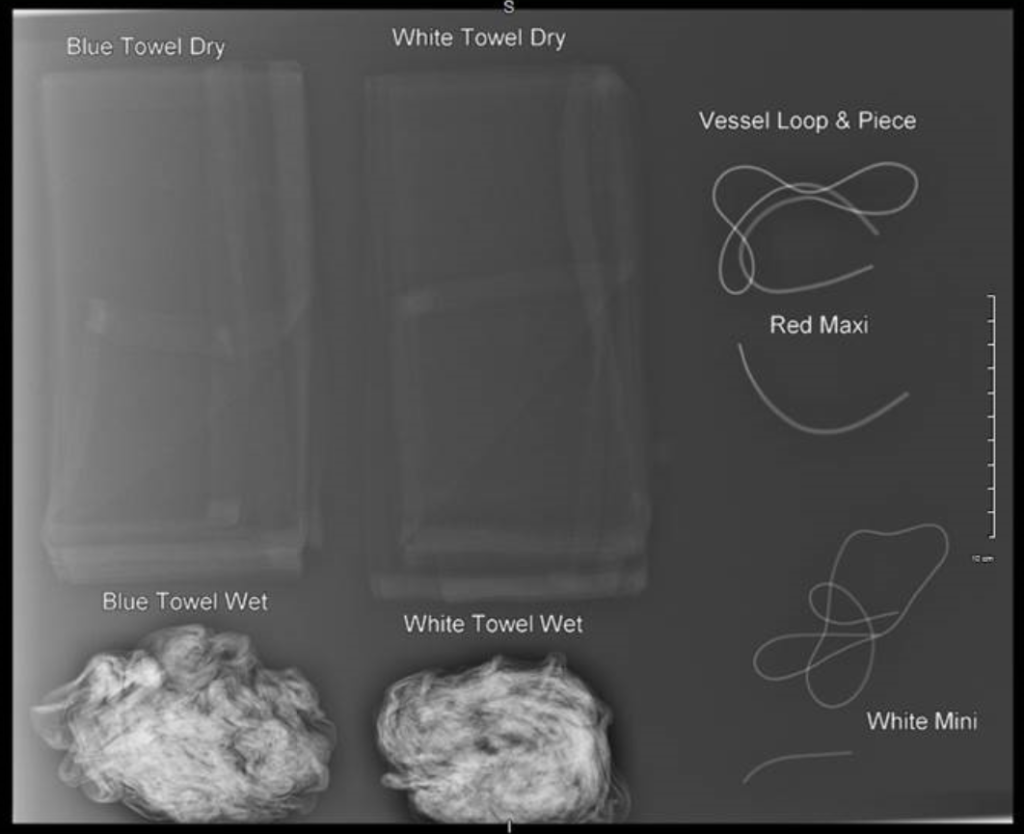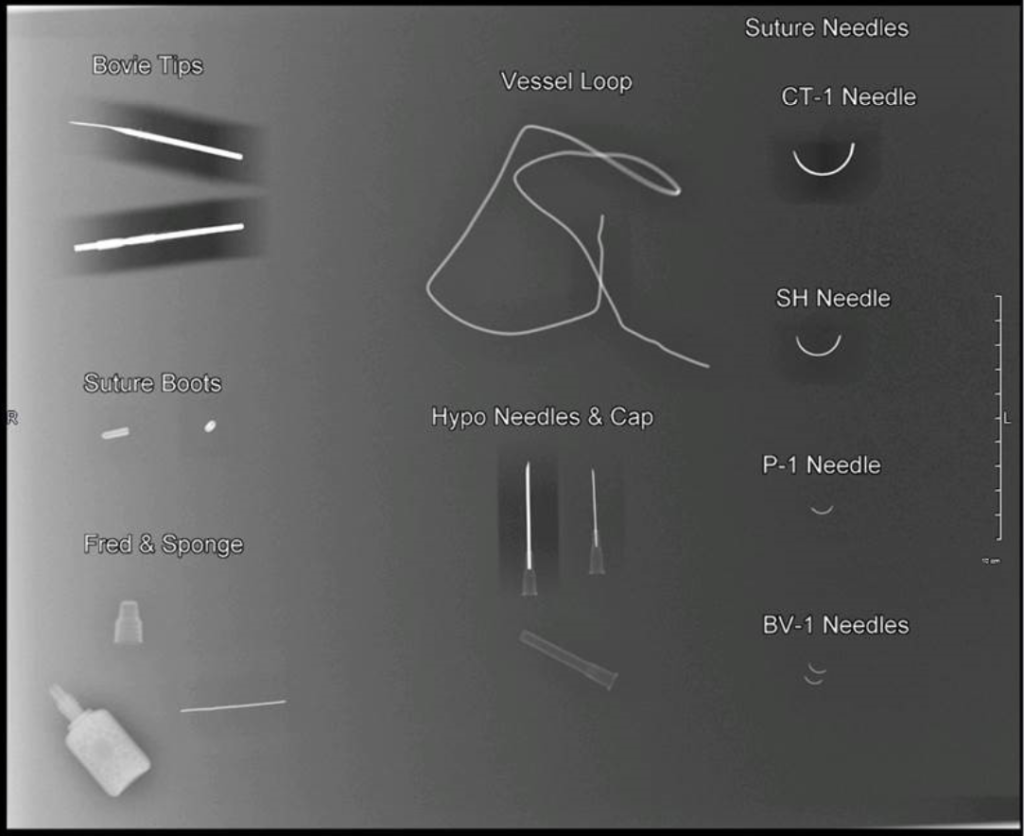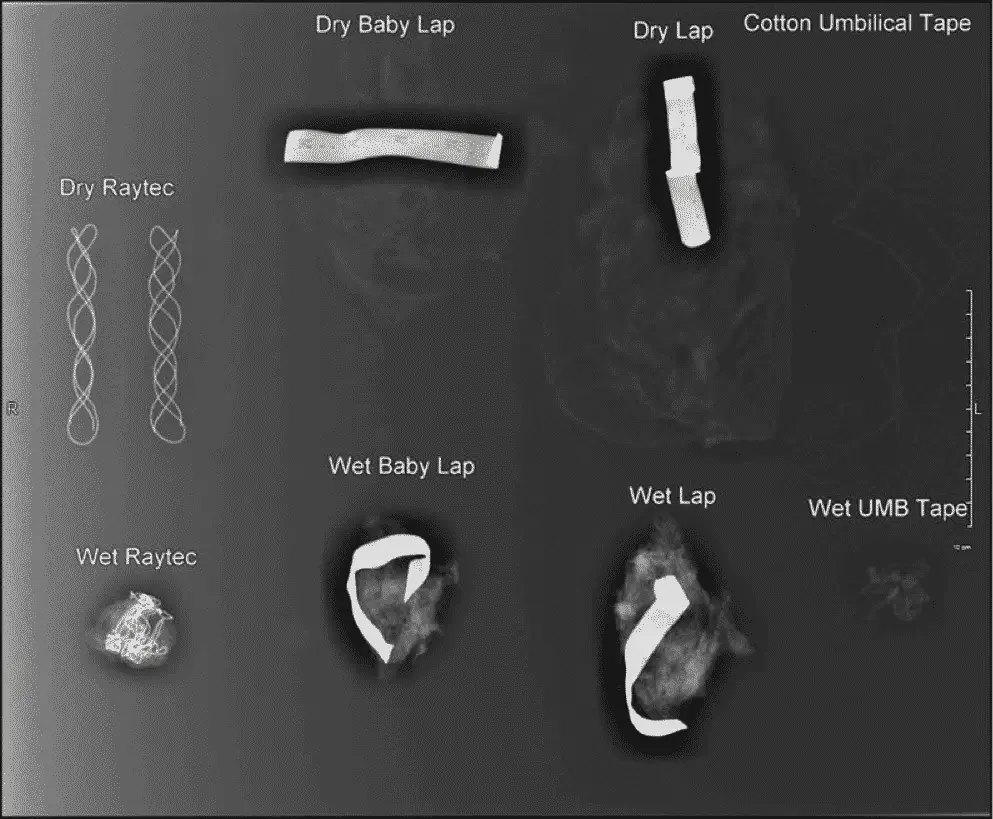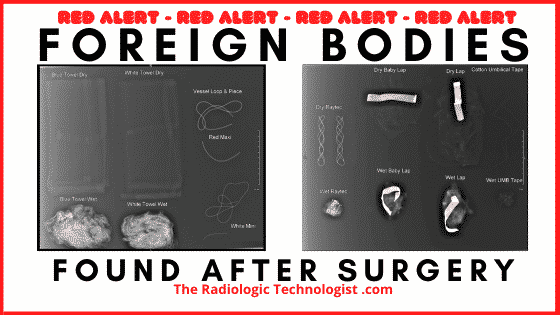Foreign body radiographs. We see it on the order as “KUB for FB” meaning a Kidneys, Ureter, Bladder x-ray for Foreign Body.
That is what radiographers perform when a surgical count comes up short right after surgery is completed.
You see, there are people on the surgery team who have the job of counting all the supplies used in a surgery case.
They count the items before the surgery and they count the items after the surgery.
On those rare occasions that the count comes up short after a surgery, an Xray Tech is called on for their expertise.
Xray to The Rescue!
This expertise is the ability to see into the human body. In this case, an abdomen xray is usually performed in the operating room.
But any anatomical location can be imaged to look for foreign bodies in the operating room.
The imaging is done before the patient is taken off the operating table. And the patient does not come off the surgical table until the image has been verified.
If a surgical instrument is left inside the body, it will show up on an xray image.
This is because of one of two things:
- This missing item is a surgical tool and therefore (usually) made of metal. Metal always shows up on an xray (so do plastics.)
- Cloth items, such as sponges and gauze, are made with a special string inserted so that it can be seen under xrays. You can see the white “ribbon” in the images below.
Common Radioopaque Surgical Items



These look a lot more distinct on a pacs system with a black background, but you get the idea.
I hope this helps you in your future fishing expeditions. If you have any other cool images of FBs, we’d love to see them.
It is a good practice to visit your own operating room and take images of the different products your surgeons use.
This little weekend project took less than two hours to complete. Your radiologists and surgeons will love you for it.
Make sure to take wet and dry sponge images. They may go in dry…but they don’t stay that way.

